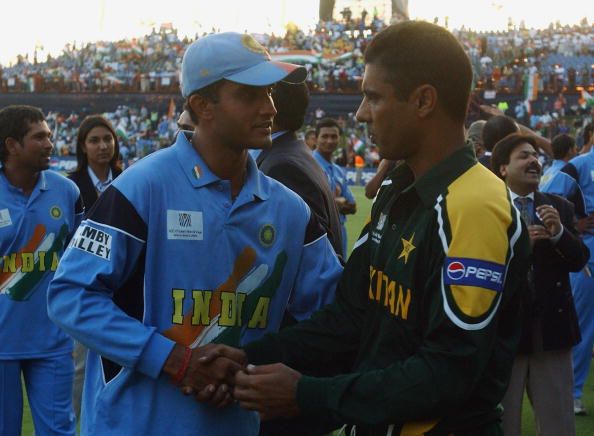
March 1, 2003 - When Tendulkar's chef-d'oeuvre demolished Pakistan
A decade back, I was gearing up for my class X board exams. The exam was commencing from the 5th March. But on the first day of March in 2003, I excused myself from the studies. It was the day when the two arch-rivals India and Pakistan locked horns with each other in one of the most-awaited battles of the Pool A match in 2003 World Cup. The newspapers were flooded with the photos of the teams practising on the eve of the match.
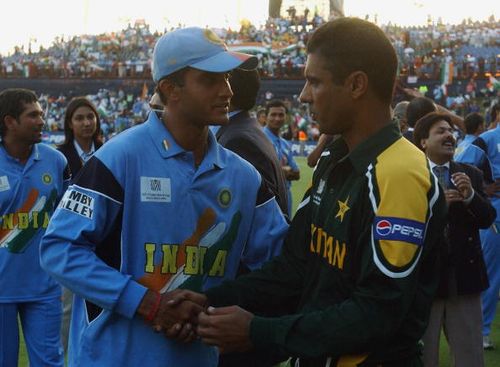
The pre-match show commenced at 12:00 noon. The discussion hinged around the fact that India had always dominated Pakistan in the World Cup ties. After 1:00 pm the action was shifted from the studio to the ground. The atmosphere at the Super Sport Park was electrifying. The match was no longer between eleven players of each side – it was a situation akin to a war between millions of supporters from both the nationalities. A few thousand spectators provided the background cheers to emphasise and glorify the significance of the match – India vs Pakistan – a challenge that captivates the emotions of almost everyone who knows cricket.
The Pakistan skipper Waqar Younis won the toss and elected to bat first much to the delight of the spectators at Centurion. I was disappointed because the previous three World Cup encounters were won by India batting first. Was this the first sign that India’s winning streak in the World Cup encounters was going to break? The 24/7 news channels were at the nascent stage of their development and the things like ‘Breaking News’ was only for important things. So after the toss, the news flashed on all the channels. One of the channels talked about how Pakistan had the advantage by batting first and also mentioned that in Indo-Pak World Cup encounters the team that had batted first won. I surreptitiously wanted to punish that news anchor for sending the negative vibes. I was no longer optimistic about India’s chances.
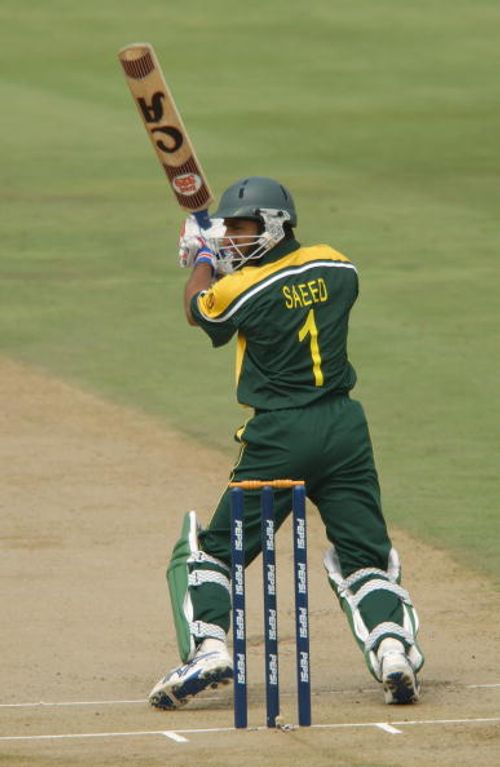 When Pakistan openers Saeed Anwar and Taufeeq Umar started with a bang, the thought embarked upon my mind about India’s sub-standard bowling for the zillionth time in my life as a 15-year-old kid. Zaheer managed to remove Umar in the 11th over, Ashish Nehra snapped up Abdul Razzaq and Inzamam-ul-Haq’s three ball eventful stay ended with a run-out. Anwar was giving Indians a tough time. The late cuts off Kumble, the majestic cover drive and the ability to rotate the strike at will – the ease with which Anwar was scoring runs made things difficult for India. In the 40th over Anwar got to his hundred, with Pakistan reaching 195 for four with Afridi to follow. The match was at the business end of the first innings.
When Pakistan openers Saeed Anwar and Taufeeq Umar started with a bang, the thought embarked upon my mind about India’s sub-standard bowling for the zillionth time in my life as a 15-year-old kid. Zaheer managed to remove Umar in the 11th over, Ashish Nehra snapped up Abdul Razzaq and Inzamam-ul-Haq’s three ball eventful stay ended with a run-out. Anwar was giving Indians a tough time. The late cuts off Kumble, the majestic cover drive and the ability to rotate the strike at will – the ease with which Anwar was scoring runs made things difficult for India. In the 40th over Anwar got to his hundred, with Pakistan reaching 195 for four with Afridi to follow. The match was at the business end of the first innings.
Ganguly introduced Nehra into the attack who yorked Anwar and dismissed him for 101. The Indian skipper introduced part-time spinner Dinesh Mongia into the attack. It was like a game of chess. Ganguly’s surprise move worked when Afridi skied Mongia’s third ball down Kumble’s throat at long-off and the Indian camp was vociferous in its celebration. The Pakistan fans cursed the birthday boy for playing a mindless shot – but that was part of Afridi’s enigmatic personality. It was advantage India. Younis Khan and Rashid Latif stitched a useful alliance and gave Pakistan’s score an air of respectability. In the end Wasim Akram hit a few lusty blows off Nehra’s last over. Pakistan finished their innings at 273 for seven. It was a commendable performance from India to restrict Pakistan to under 300, a total which looked realistic in the middle of the innings.
The Indian chase:
Sachin Tendulkar and Virender Sehwag walked out in the centre in pursuit of 274. The expectations of the fans and their emotional attachment and India’s history of being the poor chasers. India had to battle all that and engineer the run chase. The Indian chase got underway with a spanking back foot punch from Tendulkar off Akram. The things looked ominous for Pakistan since that kind of authentic shot from Tendulkar is an indication that he is due for a big score. Sehwag smashed the last ball of the first over to the boundary. Nine runs of the first over.
 The second over bowled by Shoaib Akhtar is the most talked about over in the history of World Cup encounters. He steamed in and bowled in the high 150s. The effort balls were a tad wayward and three wides were sent down by the Rawalpindi Express off his first five deliveries. Off the sixth delivery and the fourth legitimate ball of the second over, Shoaib bowled a ball short and wide at a searing pace. Tendulkar effortlessly cut the ball that went soaring over the point boundary for a massive six. The whole stadium was in awe of Tendulkar. That six is the most revered moment in the Indian cricket history. Shoaib’s missile like deliveries were being diffused by Tendulkar’s broad MRF willow. The flick off his pads, followed by a straight drive broke Pakistan’s spirits. That moment brought about smiles on the faces of fans across age groups and I dare say even to the people who were hell-bent on criticizing the little master.
The second over bowled by Shoaib Akhtar is the most talked about over in the history of World Cup encounters. He steamed in and bowled in the high 150s. The effort balls were a tad wayward and three wides were sent down by the Rawalpindi Express off his first five deliveries. Off the sixth delivery and the fourth legitimate ball of the second over, Shoaib bowled a ball short and wide at a searing pace. Tendulkar effortlessly cut the ball that went soaring over the point boundary for a massive six. The whole stadium was in awe of Tendulkar. That six is the most revered moment in the Indian cricket history. Shoaib’s missile like deliveries were being diffused by Tendulkar’s broad MRF willow. The flick off his pads, followed by a straight drive broke Pakistan’s spirits. That moment brought about smiles on the faces of fans across age groups and I dare say even to the people who were hell-bent on criticizing the little master.
Akram bowled a one-run over and things seemed to return to a state of normalcy. Shoaib refused to bowl his second over so Waqar introduced himself into the attack. Taking a leaf out of master’s book, Sehwag unleashed his brand of the upper cut that went over point region for a six. Tendulkar flicked Waqar for a boundary off his hips off the last ball of the fourth over. In Akram’s next over Sehwag smashed a couple of boundaries through the covers and the Centurion crowd was enjoying every moment of this counter-attack from the Indian openers.
Like all India-Pakistan encounters, there was a bit of drama. Waqar got Sehwag and Ganguly off consecutive balls to set cat among the pigeons for the Indians. Unperturbed by the loss of two quick wickets, Tendulkar continued with his magnificent stroke play. He was probably playing too many strokes. One such stroke off Akram nearly brought Tendulkar’s downfall. Tendulkar tried to loft Akram over mid-off but miscued the shot. Abdul Razzaq dropped a simple chance. The heartbeat of the billions of Indians experienced a sudden rise and fall, but Tendulkar survived to live another day.
Tendulkar flicked Waqar for a couple but the deep fielder conceded four overthrows. Tendulkar punched the air and his 37-ball essay had demoralized the arch-rivals. Tendulkar celebrated that milestone with an exquisite on the up punch through extra cover. That was as good a shot as one could possibly wish to see.
At 126 for two, Tendulkar was suffering from cramps. Was it a momentum-halter? The physio rushed onto the field and massaged his leg. Tendulkar got up and immediately dispatched a straight drive for a boundary. Tendulkar was struggling but he just wanted to bat for his country. Tendulkar lost Kaif but not after the duo had added 100-runs for the third wicket. But the match was still under India’s grasp.
India’s wicket-keeper Rahul Dravid walked out in the arena. The situation was absolutely perfect for Dravid to bat. The required run-rate was still well below six. Tendulkar played another authentic cover drive off Razzaq for a boundary but the physical discomfort was visible.
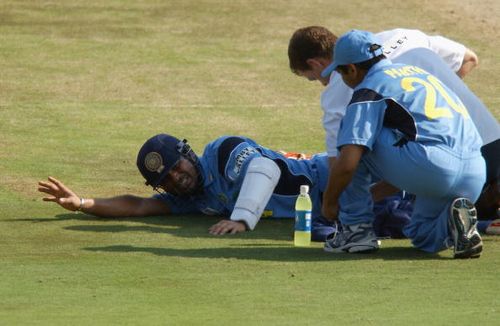
With 97 more to get, Tendulkar could no longer bear the pain. And for the first time in his 14-year-old illustrious career Tendulkar had a runner in any format of the game. Sehwag came in as Tendulkar’s runner. As Shoaib ran in fast he bowled a lethal bouncer that caught Tendulkar wrong-footed. Tendulkar failed to keep the ball down and he was caught at point. The game was in the balance. Tendulkar’s majestic 98 off 75 balls had set the platform for the middle-order batsman to follow. But was this the opening for Pakistan to engineer a collapse?
The tension hung in the air; predictions were being made with every ball bowled. Dravid was the key man and it was Yuvraj’s test of temperament. Waqar shuffled the bowlers to keep the batsmen guessing. Shoaib was giving everything he had but often bowled errant deliveries – one such delivery ended in five wides. Dravid cover-drove Waqar for a boundary; things were getting out of hand for Pakistan.
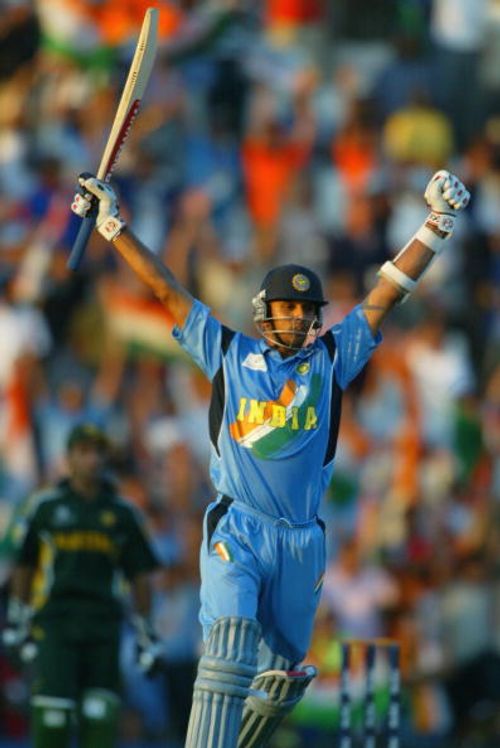 Yuvraj’s front foot drives in front of the wicket were artistic. The lazy elegance, the presentation of the full face of the bat and in the end a perfect pose for the photographers – that’s how simple Yuvraj made the cover drive look like. Dravid shepherded the youngster and India was in a driver’s seat. The southpaw reached his maiden World Cup half century and that was almost game, set and match for India.
Yuvraj’s front foot drives in front of the wicket were artistic. The lazy elegance, the presentation of the full face of the bat and in the end a perfect pose for the photographers – that’s how simple Yuvraj made the cover drive look like. Dravid shepherded the youngster and India was in a driver’s seat. The southpaw reached his maiden World Cup half century and that was almost game, set and match for India.
Then Waqar bowled a bouncer to a well-set Dravid who walloped it behind square-leg. The moment is well enshrined in the psyche of the Indian cricket aficionados. The Indian dressing room celebrated. Dravid took off his helmet and raised his arms, Yuvraj hugged him and the Centurion danced in the aisles. Sachin Tendulkar was awarded man of the match.
In India thousands of people danced in the streets. The fire crackers were lit and people were just eulogizing Tendulkar for displaying his dexterity as an artist with the bat. Each of his 12 fours was a masterpiece but the six over point was the magnum opus. It has been a decade since that eventful match was being played. But the match still gives me goose bumps.